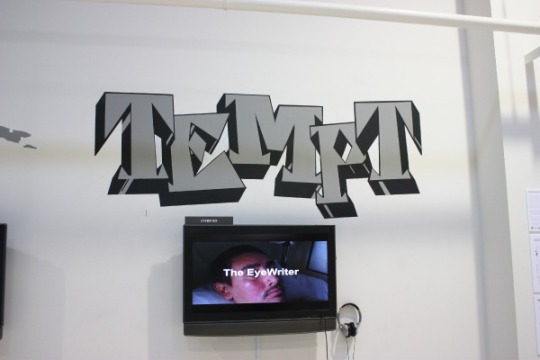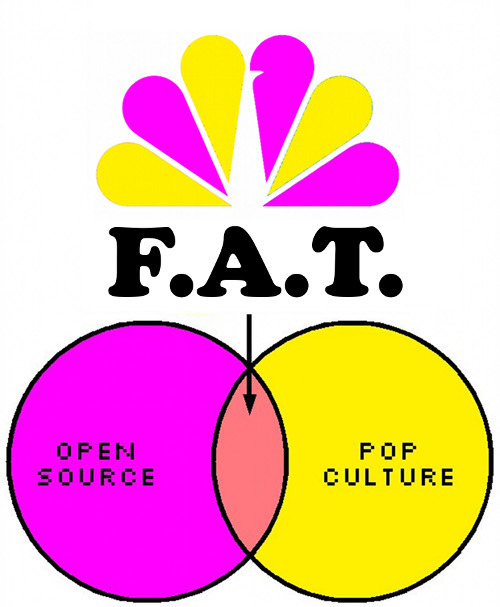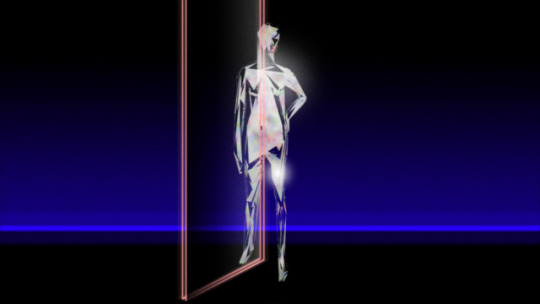#Generative_Adversarial_Networks
Explore tagged Tumblr posts
Photo

Yesterday was the closing event of the exhibition "ON AIR: Faculty Work 2020-2022" of the Taubman College of Architecture and Urban Planning, University of Michigan. I'm happy I had the chance to showcase some of SPAN's AI driven work from recent years. The Robot Garden for the new Ford Robotics building on the north campus of the University of Michigan was on show. The first project using various AI methods that actually got built. We also showed the Generali Center project at the Mariahilferstraße in Vienna, Austria. The exhibition was planned and curated by the amazing Prof. Kathy Velikov! More than 60 stellar examples of inspiration and innovation including research, professional practice projects, publications, and other creative works are on full display in a new exhibition of Taubman Faculty work from the past two years. Taubman College faculty are internationally recognized educators, researchers, and practitioners who embrace experimentation and innovation as a vehicle for engagement and change. With an experimental mindset, they seek alternatives and are driven by a desire to imagine and reimagine the future of the built environment as they explore how different disciplines, styles, and philosophies can inspire and improve our world and society. Los Angeles trapped in a glass cube. Architecture & Artificial Intelligence #exhibition #generative_adversarial_networks #neural_architecture #neuralarchitecture #artificialintelligence #artificial_intelligence #estrangement #defamiliarization #ostranenie #newparadigm #machinelearning #shklovsky #SigmundFreud #bertoldbrecht #authorship #RolandBarthes #michelfoucault #stablediffusion #aiarchitects #posthuman #aiarchitecture #archinect #archilover #archdaily #arch2o (at Ann Arbor, Michigan) https://www.instagram.com/p/CiNwtf5OUfA/?igshid=NGJjMDIxMWI=
#exhibition#generative_adversarial_networks#neural_architecture#neuralarchitecture#artificialintelligence#artificial_intelligence#estrangement#defamiliarization#ostranenie#newparadigm#machinelearning#shklovsky#sigmundfreud#bertoldbrecht#authorship#rolandbarthes#michelfoucault#stablediffusion#aiarchitects#posthuman#aiarchitecture#archinect#archilover#archdaily#arch2o
0 notes
Photo

Top Generative Adversarial Networks Courses | Univ
This advanced course will give an overview of network building blocks, followed by a review of Generative Adversarial Networks and their applications. The course also touches on latent space interpretation. At the end of this module, you will be able to build effective generative adversarial networks.
0 notes
Photo









GANs (generative_adversarial_network) ~~~amnot_series~~~, Vivi Fountoulaki
22 notes
·
View notes
Photo


Week 11 Lecture Research & Reflection
Emerging technology and design, generative design and machine learning.
This lecture I found particularly interesting. There was a large focus on emerging technology and its relationship with design. Andy and Karen mentioned generative design, parametric design, A.I. design, machine learning and robotics and design.
Most of the discussed works push boundaries. I like how art can be created from visualising data and transforming information into imagery. Andy and Karen raised interesting questions such as how much of your design is done by you? Or is it the tools which do it for you?
I picked a few areas I wanted to do deeper research on:
F.A.T Lab (Free Art and Technology LAb)

In the lecture, projects such as the Eyewriter and QR hobocodes was mentioned. These projects were both involved with Free Art and Technology Lab (F.A.T. Lab) as Andy touched on. F.A.T. Lab is an organisation dedicated to enriching the public domain. It was founded in 2007 by Evan Roth and James Powderly, also associated with Graffiti Research Lab. Their network of artists, engineers, scientists, lawyers, and musicians are committed to supporting open values and the public domain.
Their website was http://fffff.at/. I genuinely thought that I was on the wrong website or got redirected to some spam but that’s really their website!! Sadly, I found that they actually closed as of August 1, 2015. But their website is still online as an archive.
I have huge respect for all those involved in the group, and very fond memories of the laughs we’ve had and things we’ve built (hopefully some of this will continue under different banners). The excitement of F.A.T. closing is in seeing what its former members will do next.
P.S. @NBC…. 8 years and really no complaints about the logo??!! ¯\_(���)_/¯
-Post by Evan Roth, found on their website: http://fffff.at/
As mentioned in the lecture, they worked on some amazing projects such as the Eyewriter. F.A.T. Labs, along with OpenFrameworks, the Graffiti Research Lab, and The Ebeling Group teamed up with TEMPTONE. Tempt1 is a LA graffiti writer, publister and activist who was diagnosed with ALS in 2003. He is nearly completely paralysed except for his eyes. The Eyewriter is a low-cost, open source eye-tracking technology which allows Tempt1 to draw using just his eyes.

Another project was QR_STENCILER and QR_HOBO_CODES. This is what Golan Levin posted on http://fffff.at/ about it:
golan
Yep, it’s a QR code stencil generator! The F.A.T. Lab is pleased to present QR_STENCILER, a free, fully-automated utility which converts QR codes into vector-based stencil patterns suitable for laser-cutting. Additionally, we present QR_HOBO_CODES, a series of one hundred QR stencil designs which, covertly marked in urban spaces, may be used to warn people about danger or clue them into good situations. The QR_STENCILER and the QR_HOBO_CODES join the Adjustable Pie Chart Stencil in our suite of homebrew "infoviz graffiti" tools for locative and situated information display.
I really love how F.A.T. is is dedicated to the public domain and releasing open-source software. Anybody is free to distribute, remix, and modify QR_STENCILER, so long as they share and provide attribution to FFFFF.AT. "he 100 QR_HOBO_CODES and their respective stencils are hereby dedicated to the public domain.”
Golan levin intrigued me as well and I did a bit of research on him. I watched this interesting TED talk he did: https://www.ted.com/talks/golan_levin_art_that_looks_back_at_you?language=en#t-6790. He is a hybrid of an artist and an engineer. Both my sister and my dad are in the engineering field and I’ve always considered us to be in completely different/opposite fields. However, thinking about it more, technology connects engineering and design. They can work together to create fascinating works just like Golan Levin. You can find more of his projects here: http://www.flong.com/projects/. I personally like ‘Eyecode’ and ‘Footfalls.’
Generative Adversarial Network (GANs)
Ok so, GANs was something I knew nothing about but became veryyy interesting to me after researching it a bit more.
Definition (more-so for my purposes than yours): Generative adversarial networks (GANs) are algorithmic architectures that use two neural networks, pitting one against the other (thus the “adversarial”) in order to generate new, synthetic instances of data that can pass for real data. They are used widely in image generation, video generation and voice generation.
I read up on how the actual algorithm works but it was like a different language to me and I really didn’t quite understand the jargon.
Different applications and potential uses of GANs:
Fashion, art and advertising
Science
Medicine
Video games
Design
Age face photographs to show how an individual's appearance might change with age
A GAN model called Speech2Face can reconstruct an image of a person's face after listening to their voice
In the lecture, Karen and Andy mentioned thispersondoesnotexist.com which was created by Uber engineer Phillip Wang. He used the software called StyleGAN, a GAN for producing an unlimited number of portraits of fake human faces. It’s important to be wary of the potential evil purposes of this technology. This type of image synthesis can lead to the production of fake, possibly incriminating, photographs and videos. People can also use realistic photos of nonexistent people to create fake social media profiles. Scary stuff.

Sources:
https://www.wired.co.uk/article/moviebarcodes-interview
https://pathmind.com/wiki/generative-adversarial-network-gan
http://www.eyewriter.org/
https://en.wikipedia.org/wiki/StyleGAN
https://transmediale.de/free-art-and-technology-lab-ft-lab
http://fffff.at/qr-stenciler-and-qr-hobo-codes/
https://pathmind.com/wiki/generative-adversarial-network-gan
https://en.wikipedia.org/wiki/Generative_adversarial_network
https://en.wikipedia.org/wiki/StyleGAN
Images:
https://moviebarcode.tumblr.com/post/4804610224/the-lord-of-the-rings-trilogy-2001-2003-prints
http://www.eyewriter.org/
http://fffff.at/qr-stenciler-and-qr-hobo-codes/
2 notes
·
View notes
Link
0 notes
Link
0 notes
Photo

Los Angeles trapped in a glass cube. Architecture & Artificial Intelligence #urban_fictions #generative_adversarial_networks #midjourney #neural_architecture #neuralarchitecture #artificialintelligence #artificial_intelligence #estrangement #defamiliarization #ostranenie #newparadigm #machinelearning #diffusion_model #shklovsky #SigmundFreud #bertoldbrecht #authorship #RolandBarthes #michelfoucault #stablediffusion #aiarchitects #posthuman #aiarchitecture #archinect #archilover #archdaily #arch2o (at Los Angeles, California) https://www.instagram.com/p/CiJbGnvOWnt/?igshid=NGJjMDIxMWI=
#urban_fictions#generative_adversarial_networks#midjourney#neural_architecture#neuralarchitecture#artificialintelligence#artificial_intelligence#estrangement#defamiliarization#ostranenie#newparadigm#machinelearning#diffusion_model#shklovsky#sigmundfreud#bertoldbrecht#authorship#rolandbarthes#michelfoucault#stablediffusion#aiarchitects#posthuman#aiarchitecture#archinect#archilover#archdaily#arch2o
0 notes
Text
GAN (Generative Adversarial Network)
1. What is GAN
: GANs are a class of artificial intelligence algorithms used in unsupervised machine learning, implemented by a system of two neural networks contesting with each other in a zero-sum game framework.
This technique can generate photographs that look at least superficially authentic to human observers, having many realistic characteristics
2. Application
: GANs have been used to produce samples of photorealistic images for the purposes of visualizing new interior/industrial design, shoes, bags and clothing items or items for computer games' scenes.
(https://en.wikipedia.org/wiki/Generative_adversarial_network)
0 notes
Text
0 notes
Link
Tagged: via http://bit.ly/2tNkzGb
0 notes
Photo


Dueling neural networks; changing how machines learn
You may have never heard of it, and that is because it is a quite new phenomenon: generative adversial network. What is this? Well, simply put it is a new way for machines to learn and create content on their own that is undistinguishable from human made content to the human eye. It is, in many ways, the way most machines are predicted to learn in the future according to Will Knight, editor at the MIT review.
This new way of learning works by giving one network a limited supply of information and asking it generate information, while we give the other network the same set of informational elements but give it a discriminatory task! The two then work together to create the elements we asked for.
This use of both networks “dueling” with eachother and providing amazing results is very fascinating to me. This means that in the future, we will be able to just tell what we’d like in a picture (for example, I want Micheal Jackson in the beach with a sunset behind him) and the computer will be able to generate this image for you, isn’t that wonderful? However, the way it will be practically used in the generation of interior design or landscaping for computer games.
It is a quite interesting feat to think about though!
Sources:
https://www.technologyreview.com/s/603216/5-big-predictions-for-artificial-intelligence-in-2017/
https://en.wikipedia.org/wiki/Generative_adversarial_networks
https://www.slideshare.net/Artifacia/generative-adversarial-networks-and-their-applications
0 notes
Photo

Sometimes, the rabbit hole leads to very strange places. Architecture & Artificial Intelligence #midjourneyarchitecture #generative_adversarial_networks #midjourney #neural_architecture #neuralarchitecture #artificialintelligence #artificial_intelligence #estrangement #defamiliarization #ostranenie #newparadigm #machinelearning #diffusion_model #shklovsky #SigmundFreud #bertoldbrecht #authorship #RolandBarthes #michelfoucault #stablediffusion #aiarchitects #posthuman #aiarchitecture #archinect #archilover #archdaily #arch2o (at Ann Arbor, Michigan) https://www.instagram.com/p/CiDr9pRucVT/?igshid=NGJjMDIxMWI=
#midjourneyarchitecture#generative_adversarial_networks#midjourney#neural_architecture#neuralarchitecture#artificialintelligence#artificial_intelligence#estrangement#defamiliarization#ostranenie#newparadigm#machinelearning#diffusion_model#shklovsky#sigmundfreud#bertoldbrecht#authorship#rolandbarthes#michelfoucault#stablediffusion#aiarchitects#posthuman#aiarchitecture#archinect#archilover#archdaily#arch2o
0 notes
Photo

Ephemeral house Architecture & Artificial Intelligence #midjourneyarchitecture #aiarchitecture #generative_adversarial_networks #midjourney #neural_architecture #neuralarchitecture #artificialintelligence #artificial_intelligence #estrangement #defamiliarization #ostranenie #newparadigm #machinelearning #diffusion_model #shklovsky #SigmundFreud #bertoldbrecht #authorship #RolandBarthes #michelfoucault #stablediffusion #aiarchitects #posthuman #aiarchitecture #archinect #archilover #archdaily #arch2o (at Ann Arbor, Michigan) https://www.instagram.com/p/CiBri52O6Ut/?igshid=NGJjMDIxMWI=
#midjourneyarchitecture#aiarchitecture#generative_adversarial_networks#midjourney#neural_architecture#neuralarchitecture#artificialintelligence#artificial_intelligence#estrangement#defamiliarization#ostranenie#newparadigm#machinelearning#diffusion_model#shklovsky#sigmundfreud#bertoldbrecht#authorship#rolandbarthes#michelfoucault#stablediffusion#aiarchitects#posthuman#archinect#archilover#archdaily#arch2o
0 notes
Photo

I'm happy to share that the chapter "Urban Fictions" by Sandra Manninger, Alexandra Carlson and myself was published in the book "Machine Learning and the City" edited by Silvio Carta. Silvio collected an amazing roster of authors, among them Andrew Witt, Stanislas Chaillou, Benjamin Ennemoser, José Luis Garcia de Castillo y Lopez, Kyle Steinfeld, Julian Bleecker, Ray Kurzweil and many, many more. Published by Wiley Architecture & Artificial Intelligence #urban_fictions #generative_adversarial_networks #midjourney #neural_architecture #neuralarchitecture #artificialintelligence #artificial_intelligence #estrangement #defamiliarization #ostranenie #newparadigm #machinelearning #diffusion_model #shklovsky #SigmundFreud #bertoldbrecht #authorship #RolandBarthes #michelfoucault #stablediffusion #aiarchitects #posthuman #aiarchitecture #archinect #archilover #archdaily #arch2o (at Ann Arbor, Michigan) https://www.instagram.com/p/CiBgeCWO3M-/?igshid=NGJjMDIxMWI=
#urban_fictions#generative_adversarial_networks#midjourney#neural_architecture#neuralarchitecture#artificialintelligence#artificial_intelligence#estrangement#defamiliarization#ostranenie#newparadigm#machinelearning#diffusion_model#shklovsky#sigmundfreud#bertoldbrecht#authorship#rolandbarthes#michelfoucault#stablediffusion#aiarchitects#posthuman#aiarchitecture#archinect#archilover#archdaily#arch2o
0 notes
Video
instagram
I'm happy to announce that the AR2IL, the Architecture and Artificial Intelligence Laboratory at Taubman college has won a UMOR-TCAUP RCI Award. This generous award allows us to continue our research on 3D Datasets for Architecture Design, allowing us to expand our global effort to create equitable datasets for architecture design. The project 'Model Mine' pertains to the creation of a 3D model database for the application of methodologies emerging from AI research in Architecture design. In particular design methods that use 3D Graph Convolutional Neural Networks (GraphCNN) and related algorithms. Initial research in this area has been conducted in the last two years at the AR2IL yielding promising results – evidenced for example by the resonance to papers such as “3D Graph Convolutional Neural Networks in Architecture Design”. The M2 proposal’s goal is the creation of an architecture-specific 3D model database in order to expand and improve the results of this highly innovative design method. As this is still pioneering work, the right steps in establishing the necessary databases need to be taken. Currently, there are no 3D Model databases for Architecture that cater specifically to AI research. The proposed database consists of up to 10.000 architecture models (OBJ’s) representing housing projects of different scales, but more importantly: from different cultures. This is crucial in order to avoid the creation of an architecture database that is culturally biased in one specific direction. This would allow us to interrogate architecture through the use of AI techniques in an inclusive fashion, ensuring a diverse approach to this new branch of Architecture design. This proposal is part of the newly founded AR2IL laboratory, an interdisciplinary laboratory between the Architecture, Robotics, and Computer Science department of UoM. #generative_adversarial_networks #architecture #design #artificial_intelligence #neuralarchitecture #machinelearning #machinevision #realism #weird_realism #dataset #database #labeling #semantic_information #taubman_college (at Philadelphia, Pennsylvania) https://www.instagram.com/p/CQ4RQc9CSmi/?utm_medium=tumblr
#generative_adversarial_networks#architecture#design#artificial_intelligence#neuralarchitecture#machinelearning#machinevision#realism#weird_realism#dataset#database#labeling#semantic_information#taubman_college
0 notes
Photo

I'm happy to announce that the Architecture and Artificial Intelligence Lab (AR2IL) at Taubman College has received a generous grant from ArtsEngine to continue our research on a semantic plan dataset. The project "Common House: Semantic Plan Database for GAN's in Architecture" presents itself as an opportunity to tackle a specific kind of database: plans with semantic information. In order to teach an Artificial Neural Network (Such as a GAN, a Generative Adversarial Network) the specifics of a plan -i.e: what is a living room, what is a sleeping room, what is a kitchen, etc. - the AI needs to be trained with data that is labeled accordingly. In collaboration with faculty and students from Computer Science and Robotics, the idea is to create a streamlined workflow for the creation of a dataset of plans with semantic information. Special attention is given to creating an inclusive dataset that avoids the pitfalls of focussing on Western architecture only. More information to come soon. https://artsengine.engin.umich.edu/ #generative_adversarial_networks #architecture #design #artificial_intelligence #neuralarchitecture #machinelearning #machinevision #realism #weird_realism #dataset #database #labeling #semantic_information #taubman_college (at Liberty Bell) https://www.instagram.com/p/CQUIrNMMyy2/?utm_medium=tumblr
#generative_adversarial_networks#architecture#design#artificial_intelligence#neuralarchitecture#machinelearning#machinevision#realism#weird_realism#dataset#database#labeling#semantic_information#taubman_college
0 notes